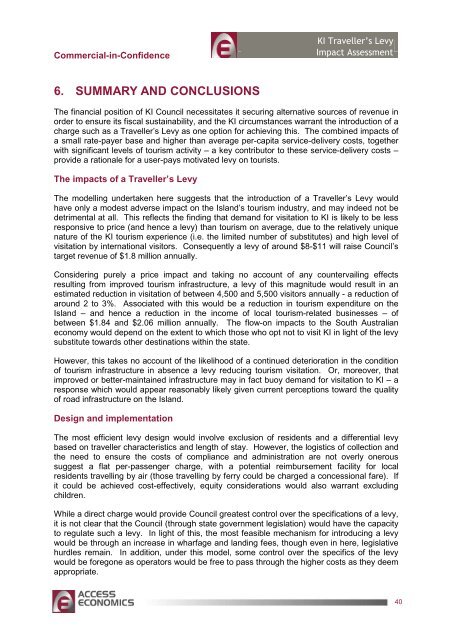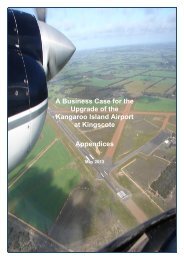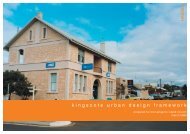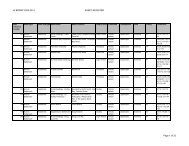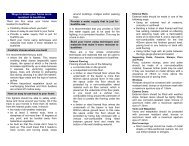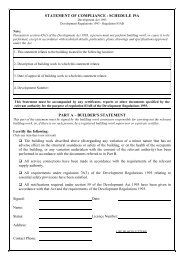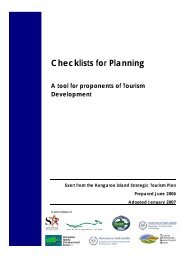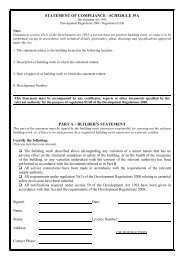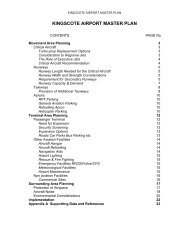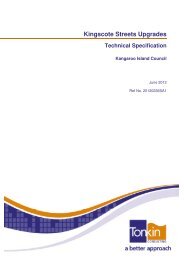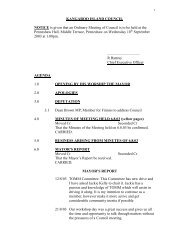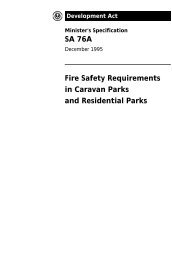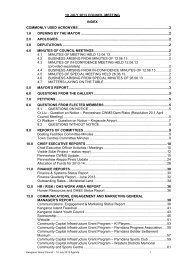KI Traveller's Levy Economic Impact Assessment - Kangaroo Island ...
KI Traveller's Levy Economic Impact Assessment - Kangaroo Island ...
KI Traveller's Levy Economic Impact Assessment - Kangaroo Island ...
You also want an ePaper? Increase the reach of your titles
YUMPU automatically turns print PDFs into web optimized ePapers that Google loves.
Commercial-in-Confidence<br />
<strong>KI</strong> Traveller’s <strong>Levy</strong><br />
<strong>Impact</strong> <strong>Assessment</strong><br />
6. SUMMARY AND CONCLUSIONS<br />
The financial position of <strong>KI</strong> Council necessitates it securing alternative sources of revenue in<br />
order to ensure its fiscal sustainability, and the <strong>KI</strong> circumstances warrant the introduction of a<br />
charge such as a Traveller’s <strong>Levy</strong> as one option for achieving this. The combined impacts of<br />
a small rate-payer base and higher than average per-capita service-delivery costs, together<br />
with significant levels of tourism activity – a key contributor to these service-delivery costs –<br />
provide a rationale for a user-pays motivated levy on tourists.<br />
The impacts of a Traveller’s <strong>Levy</strong><br />
The modelling undertaken here suggests that the introduction of a Traveller’s <strong>Levy</strong> would<br />
have only a modest adverse impact on the <strong>Island</strong>’s tourism industry, and may indeed not be<br />
detrimental at all. This reflects the finding that demand for visitation to <strong>KI</strong> is likely to be less<br />
responsive to price (and hence a levy) than tourism on average, due to the relatively unique<br />
nature of the <strong>KI</strong> tourism experience (i.e. the limited number of substitutes) and high level of<br />
visitation by international visitors. Consequently a levy of around $8-$11 will raise Council’s<br />
target revenue of $1.8 million annually.<br />
Considering purely a price impact and taking no account of any countervailing effects<br />
resulting from improved tourism infrastructure, a levy of this magnitude would result in an<br />
estimated reduction in visitation of between 4,500 and 5,500 visitors annually - a reduction of<br />
around 2 to 3%. Associated with this would be a reduction in tourism expenditure on the<br />
<strong>Island</strong> – and hence a reduction in the income of local tourism-related businesses – of<br />
between $1.84 and $2.06 million annually. The flow-on impacts to the South Australian<br />
economy would depend on the extent to which those who opt not to visit <strong>KI</strong> in light of the levy<br />
substitute towards other destinations within the state.<br />
However, this takes no account of the likelihood of a continued deterioration in the condition<br />
of tourism infrastructure in absence a levy reducing tourism visitation. Or, moreover, that<br />
improved or better-maintained infrastructure may in fact buoy demand for visitation to <strong>KI</strong> – a<br />
response which would appear reasonably likely given current perceptions toward the quality<br />
of road infrastructure on the <strong>Island</strong>.<br />
Design and implementation<br />
The most efficient levy design would involve exclusion of residents and a differential levy<br />
based on traveller characteristics and length of stay. However, the logistics of collection and<br />
the need to ensure the costs of compliance and administration are not overly onerous<br />
suggest a flat per-passenger charge, with a potential reimbursement facility for local<br />
residents travelling by air (those travelling by ferry could be charged a concessional fare). If<br />
it could be achieved cost-effectively, equity considerations would also warrant excluding<br />
children.<br />
While a direct charge would provide Council greatest control over the specifications of a levy,<br />
it is not clear that the Council (through state government legislation) would have the capacity<br />
to regulate such a levy. In light of this, the most feasible mechanism for introducing a levy<br />
would be through an increase in wharfage and landing fees, though even in here, legislative<br />
hurdles remain. In addition, under this model, some control over the specifics of the levy<br />
would be foregone as operators would be free to pass through the higher costs as they deem<br />
appropriate.<br />
40


